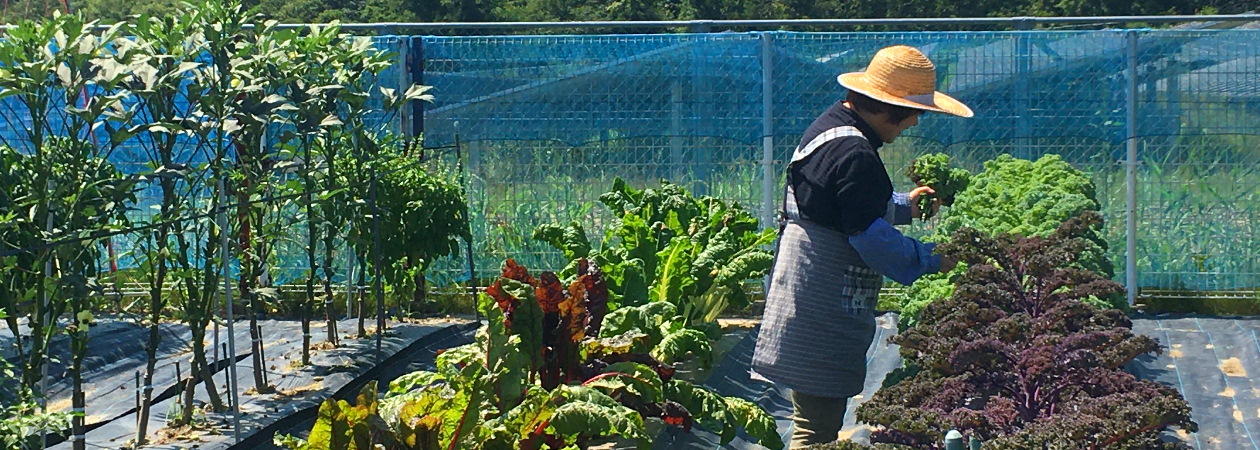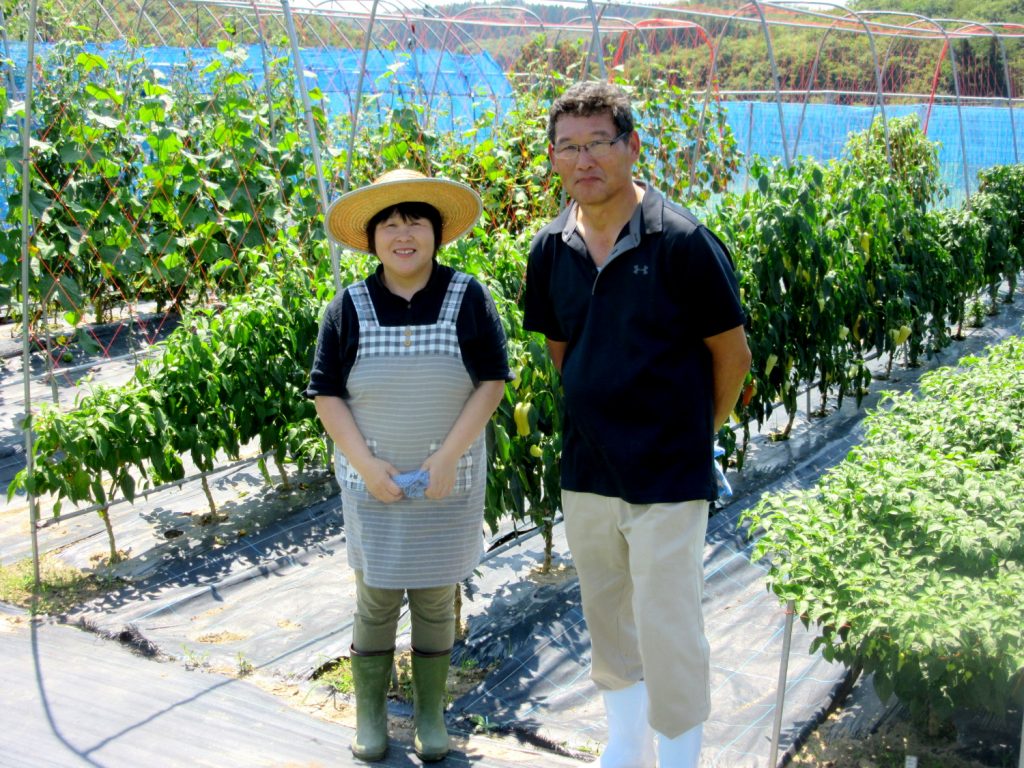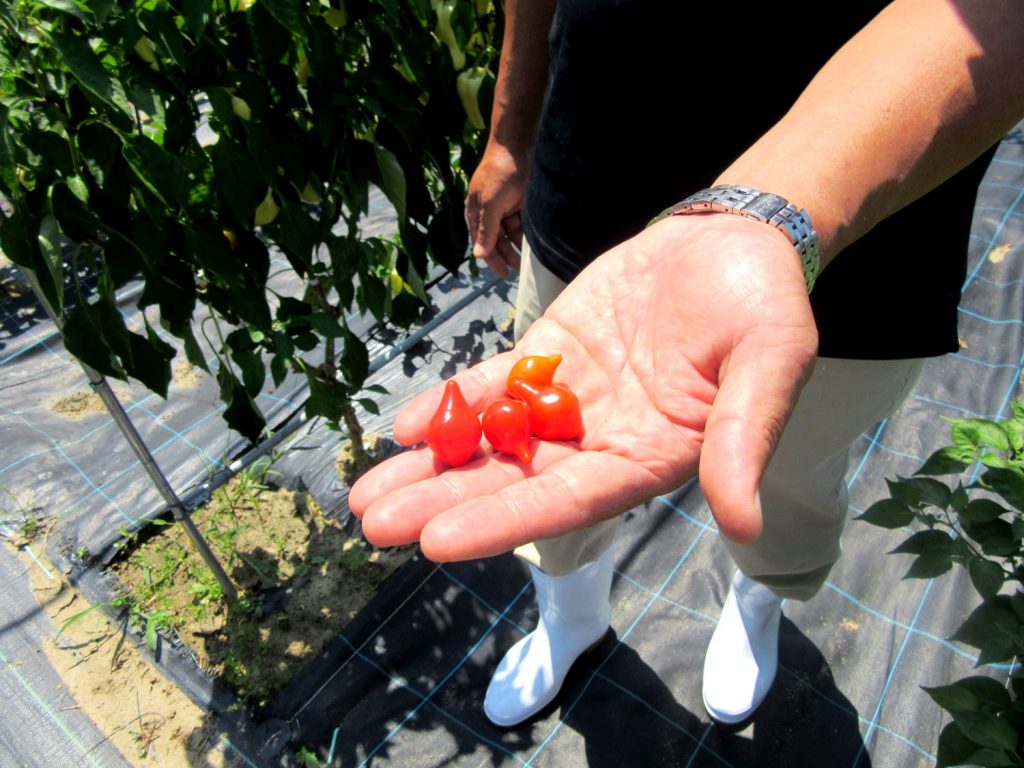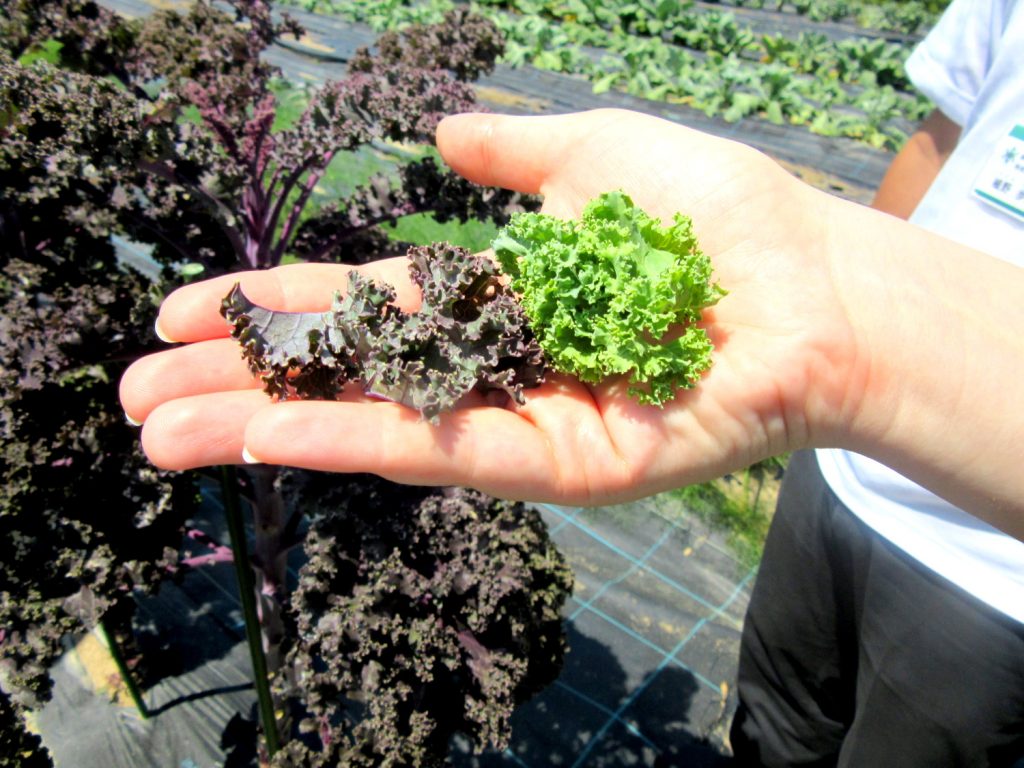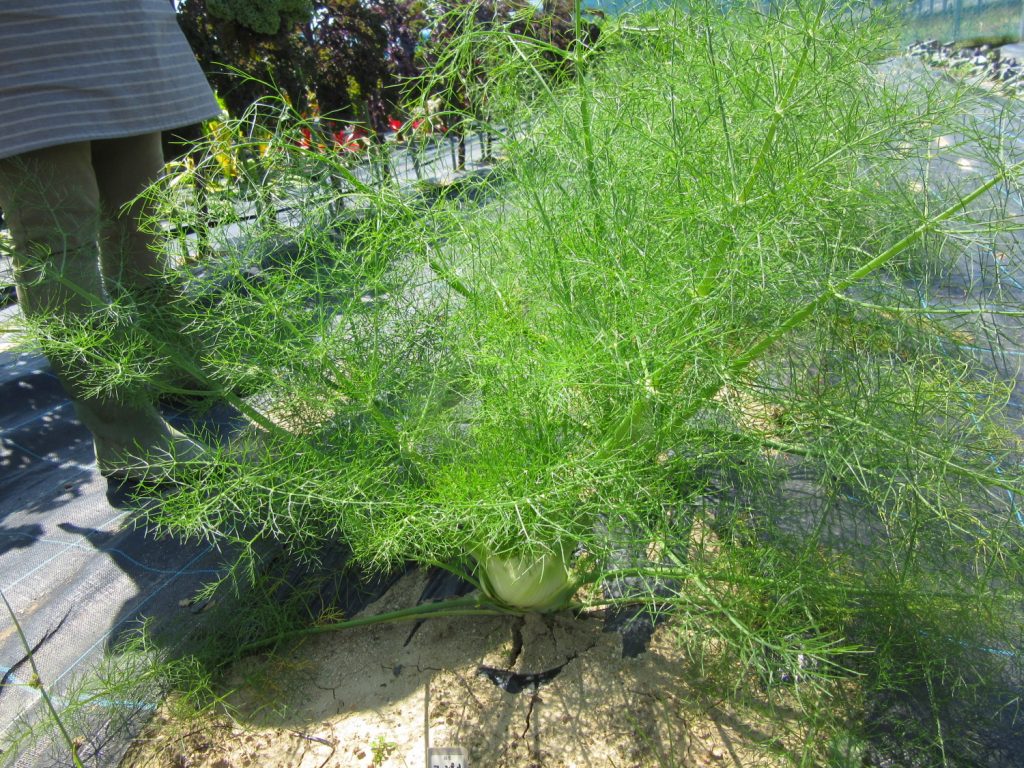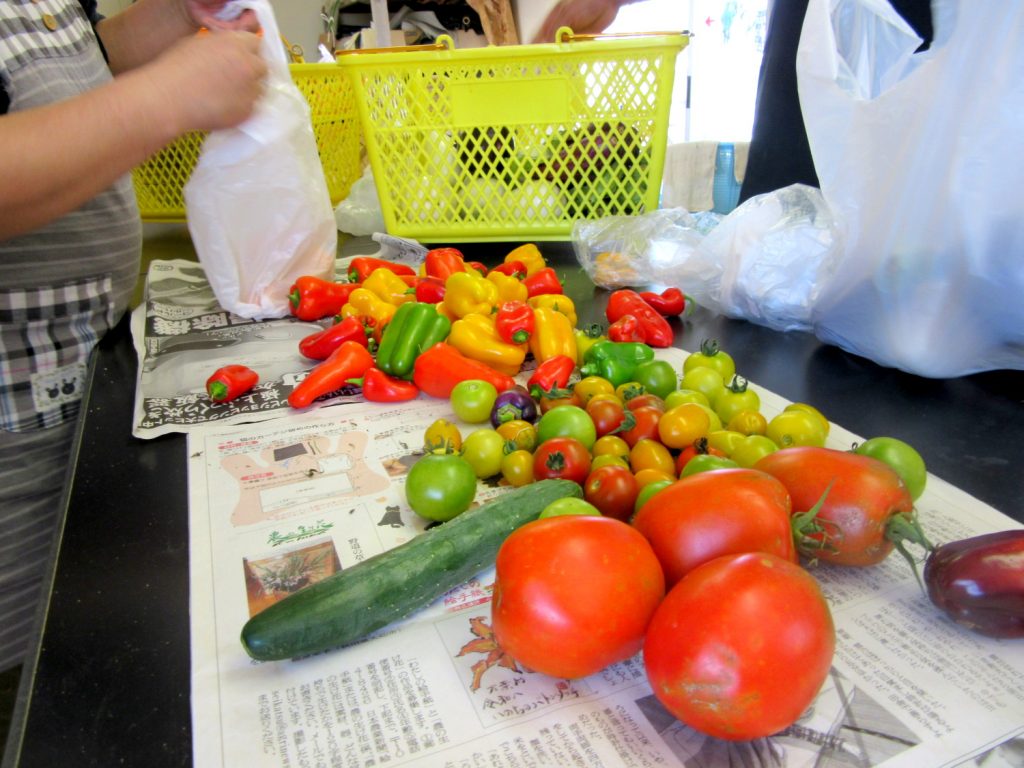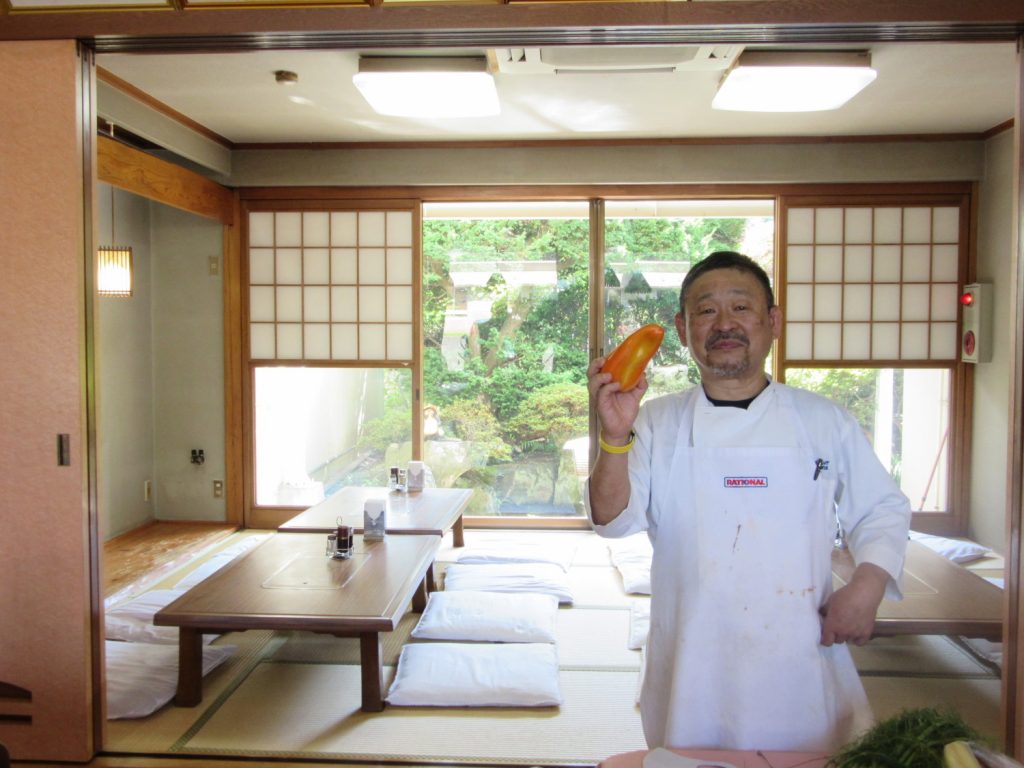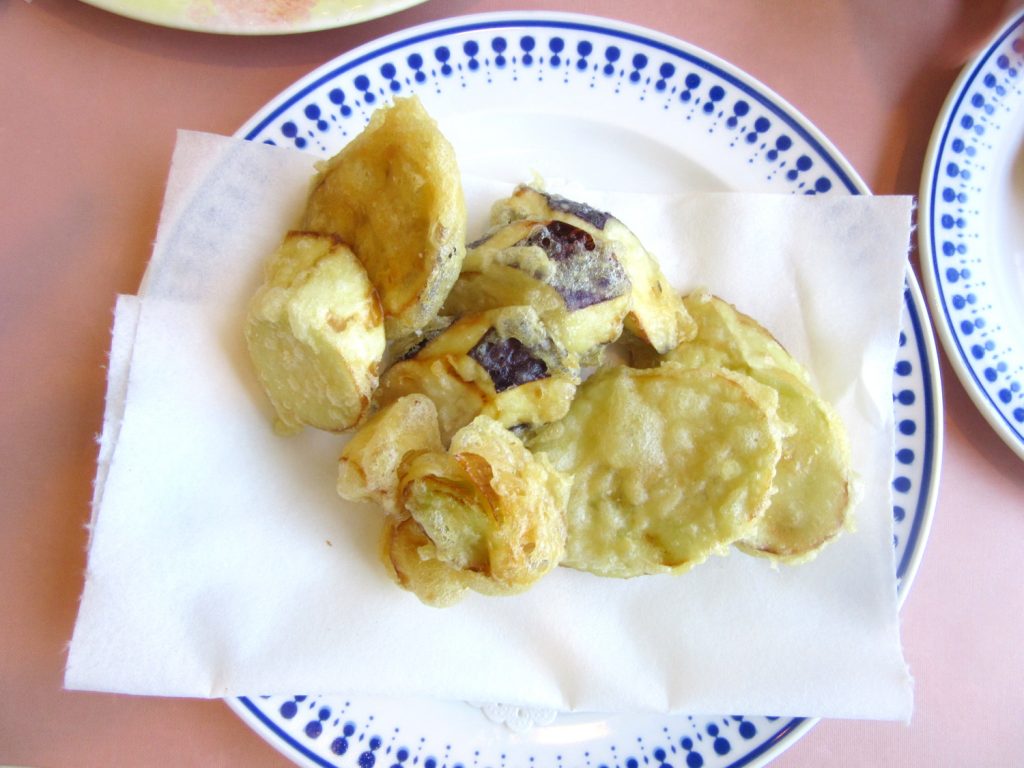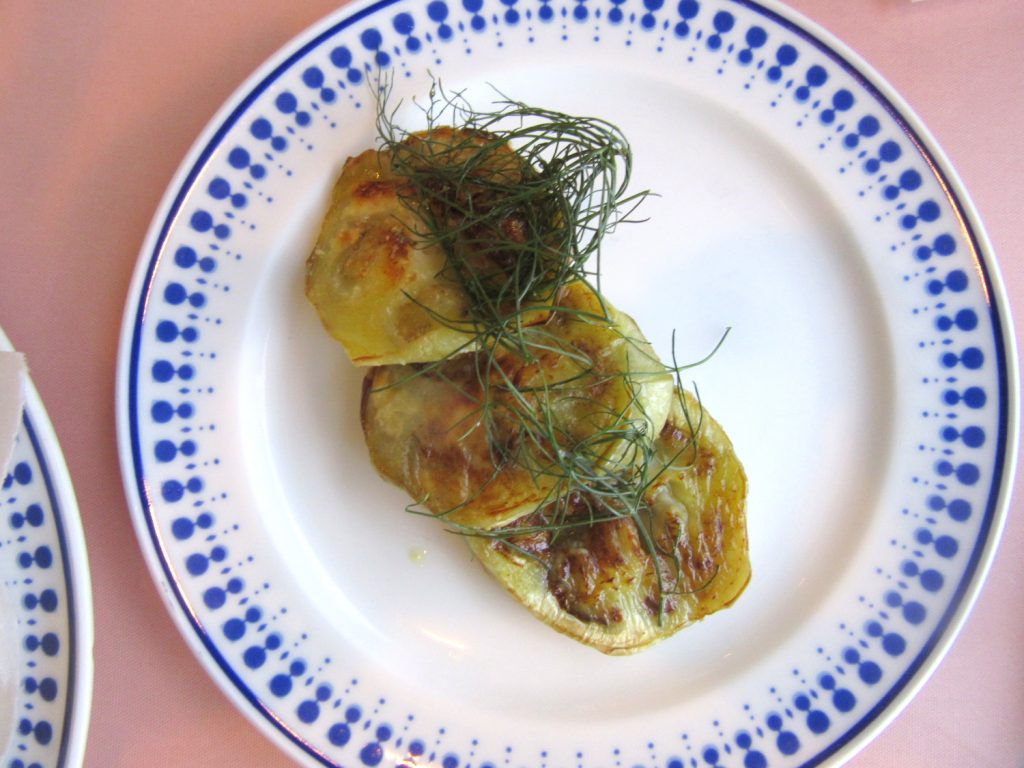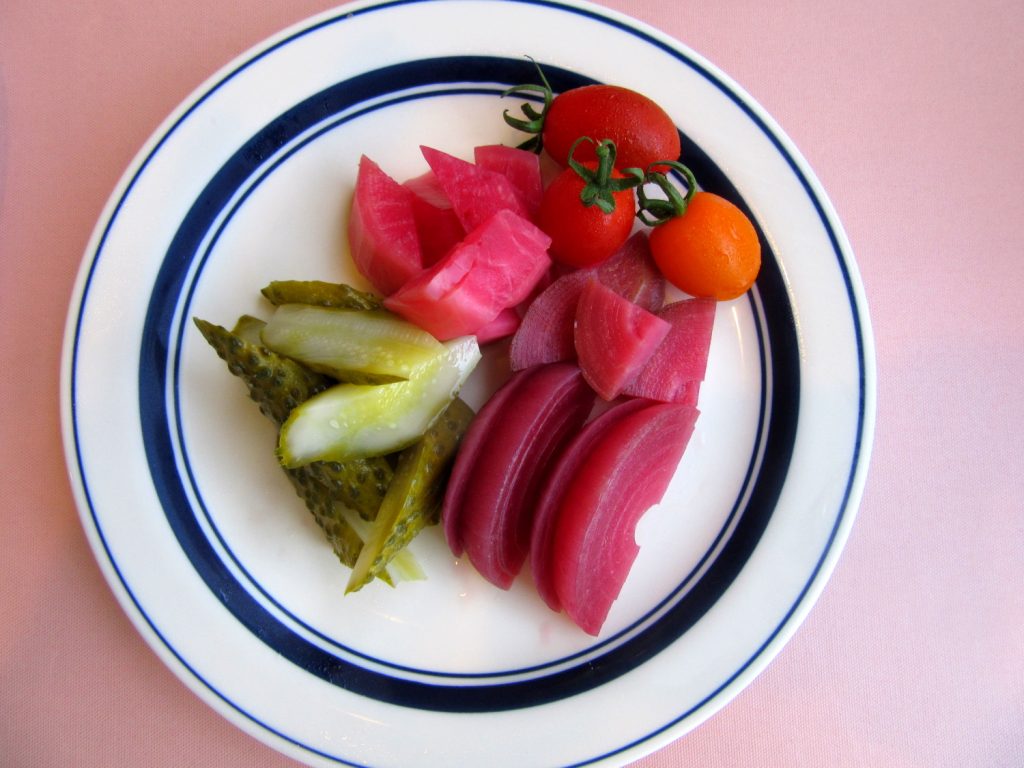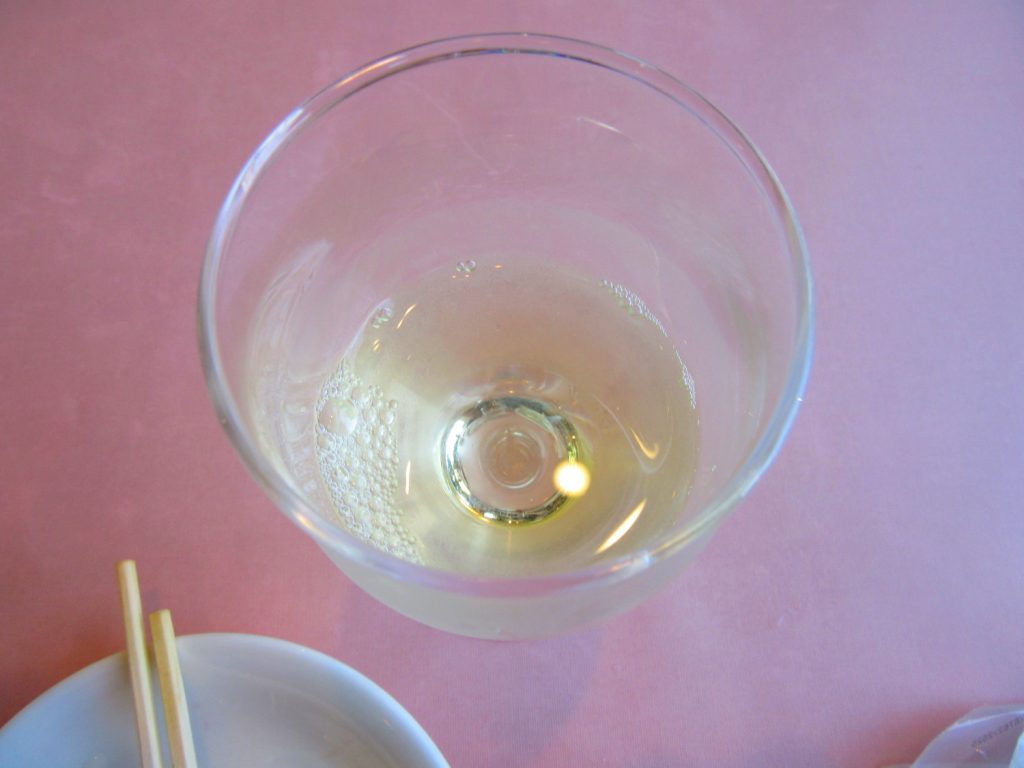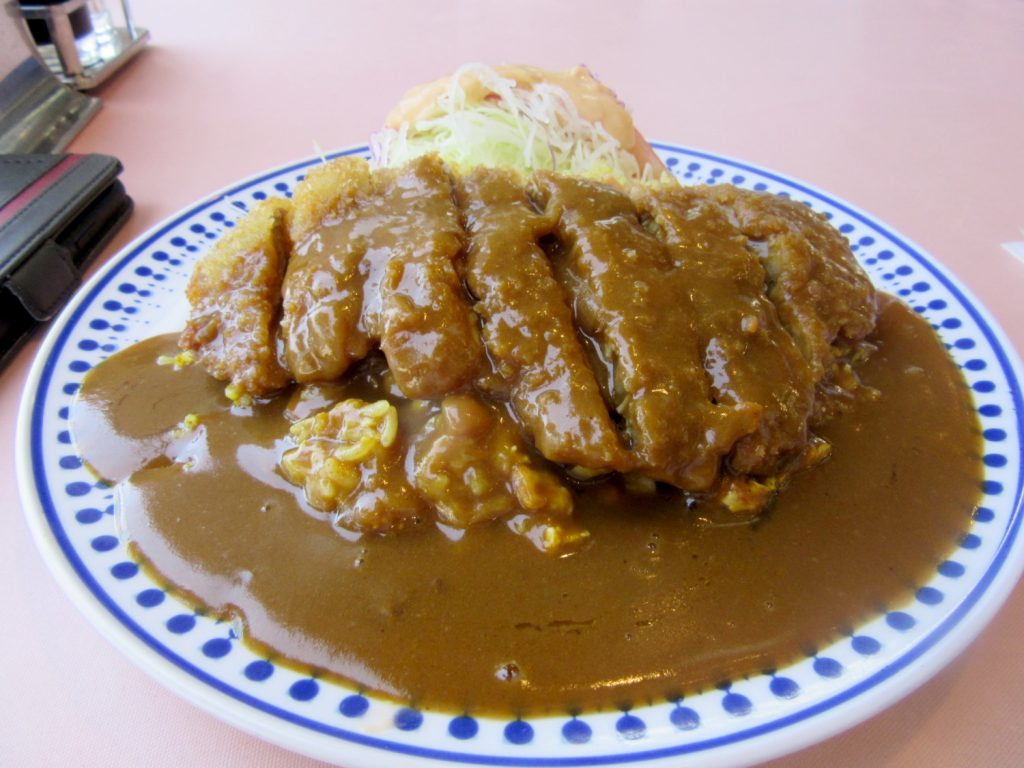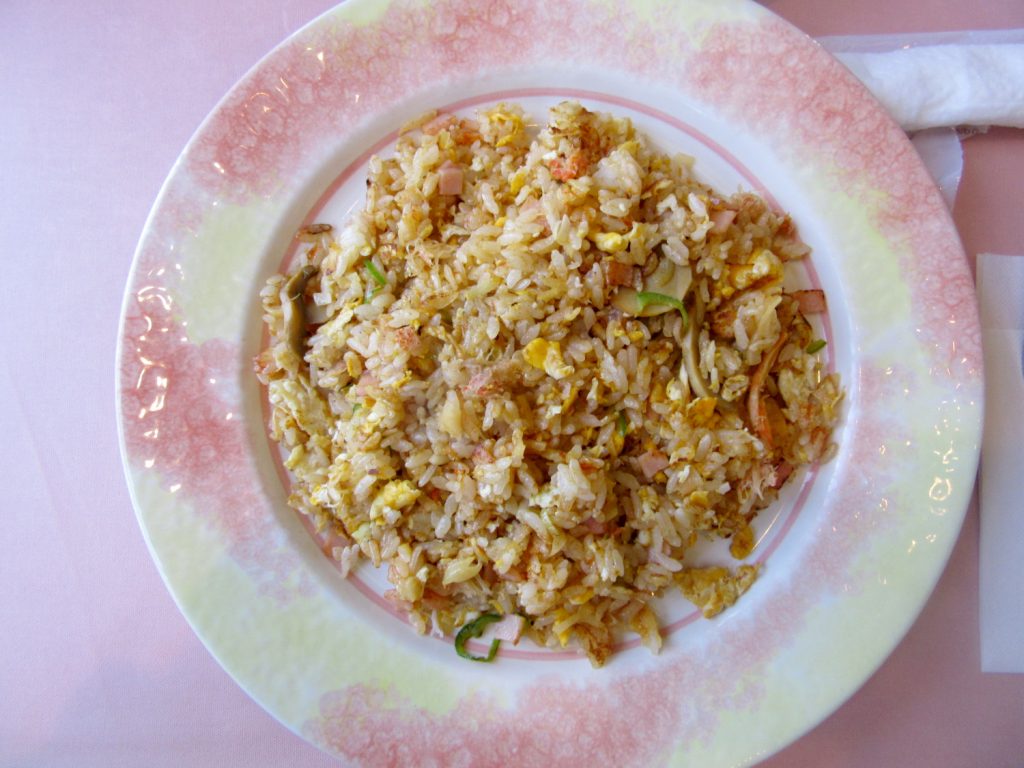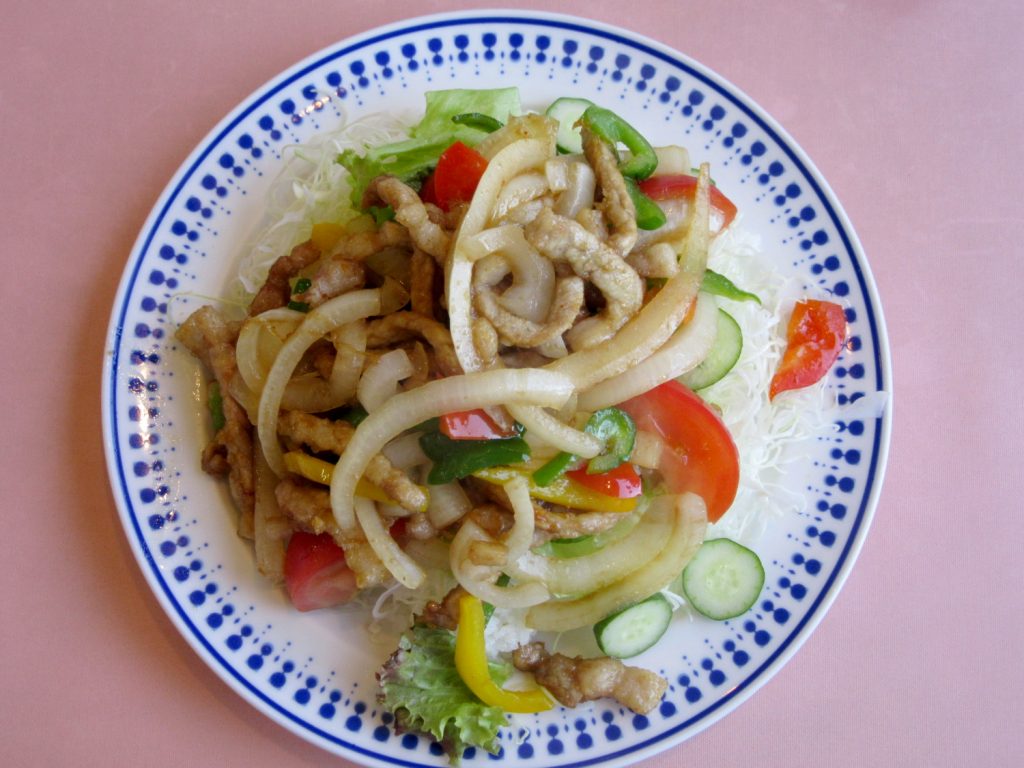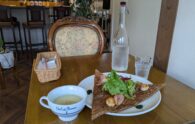Ichinoseki City has been running a project studying how the area can grow vegetables found in the west, which Aimi Bell wrote a piece for THE KITAKAMI TIMES about in March of this year.
Many of these vegetables are just about ripe for the picking, so we decided to take a visit to the Ichinoseki City Southern Agricultural Technology Development Center where they’ve been growing these veggies, as well as the Asahiya Restaurant which held a tasting using these vegetables last year.

Entrance to the Southern Agricultural Technology Development Center
It says, “A New Challenge – Western Vegetables”
We first dropped by the agricultural center to see the fields as well as interview the people involved. Western veggies were growing even at the front entrance by the road, showing off their project to the people who pass by.
Including the fields and the greenhouse, they have about 10 ares* with which to try growing these vegetables. They change out the types of vegetables depending on the season, and this year alone they will try growing around 80 types of vegetables.
*Are – A unit of area equal to 100 square meters.
An interview with Chiba Hiroshi, deputy director of the Ichinoseki City Southern Agricultural Technology Development Center
- Are you able to grow these western vegetables in Ichinoseki City (Japan)? How are they different from traditionally Japanese vegetables?
We’re at about the same latitude as Europe, so I think we’ll be able to grow the majority of these vegetables. Compared to Japanese vegetables, I feel like western vegetables have been cultivated in order to improve their shape and color.
- What can a typical person do to promote the cultivation of western vegetables?
Demand won’t grow for these vegetables if people just think of them as a rare product. It will take a persistent effort, but it’s most important to show consumers how to eat these vegetables. If we can grow demand as well as match the timing and amount of supply, it will lead to sales for a long period of time. We don’t have to stop at simply producing and then selling – creating a system for accepting/sending orders, along with production and supply, could lead to a rejuvenation of industry for the region.
- What initiatives are you running in order to get local farmers to grow these vegetables?
This year, we supplied 6 young farmers with shallot seeds in order to have them experiment with growing them. In addition, we also have an initiative to supply those shallots to local hotels and restaurants. Shallots aren’t really produced domestically, so we selected a type of shallot that would keep well in storage after harvest, leading to a long-term supply. I hope that we use this as one pillar of our project and increase our scope to many other types of vegetables.
- How about initiatives to increase cultivation of western vegetables in Ichinoseki in the future?
There are a lot of young farmers interested in growing western vegetables, with the skills to grow them to boot. However, there’s not a lot of demand, and even smaller individual supply, so it’s difficult to grow it into a business. I hope that, more than anything else, these farmers can see the fruits of their harvest being consumed and praised right in front of them. It’s a challenge to be overcome, but I will continue to closely gather information on the current status of consumption and production, as well as people’s hopes for the future. I hope to make Ichinoseki recognized by everybody as a place that grows western vegetables.
These cute little peppers are a type of chili. They’re quite mild, so you can eat them as is, but I did detect a tiny bit of a zip while eating them. You can eat them pickled.
Kale is famous in Japan as the ingredient in green juice. You can use it in salads and stir-fry dishes.
This aromatic plant is used as an herb. You can use the stem in salads and soups.
Due to COVID-19, this year the center hasn’t been able to hold any open days, but they are still continuing to take reservations for people who want to visit the field. They told us that they always give vegetables out to people who tour the center, so we also got a bunch of souvenirs.
Around 40-50 minutes away from the city center by car is an area called Senmaya. In the center of Senmaya is “Restaurant Asahiya” which is a Western cuisine* restaurant that has been running for over 40 years. We had lunch here as well as interviewed the chef.
*In Japan, a common type of restaurant you’ll find is called “Yoshoku” which literally means Western cuisine. This is typically French-inspired food but also includes things like curry, fried cutlets, and other types of food that became popular after the country opened its borders in the 19th century. There are many popular dishes here that aren’t actually found in the “west” – at least not in these forms. You could say it’s Western food modified for Japanese tastes.
An interview with Chef Harada Ryoichi of Restaurant Asahiya
- Where do you typically get the western vegetables that you use?
I buy from farmers in Kitakami City or frozen from Hokkaido. I also get wares from within Ichinoseki and farmers markets.
- How do you feel about Ichinoseki City’s initiative to grow western vegetables?
I think it’s great. We don’t have many Western-style restaurants in Ichinoseki, but I think these could be on the menu on places that serve other types of cuisine. I hope they work hard to have Ichinoseki become like Kahoku in Yamagata Prefecture (*The town of Kahoku in Yamagata has an initiative to grow Italian vegetables).
- Are there any kind of western vegetables you’d like to try?
I’ve been involved with western cuisine for many years, so I’ve tried most things. Iwate is rich in the bounties of both the sea and land, so I’d like to work on some sort of new dish that uses these ingredients.
When I mentioned that we sometimes have international conferences here regarding the ILC, he said that he hopes all of the chefs of Iwate can come together to welcome our guests. Chef Harada has received many awards, including the Disciples Award from the Association des Disciples d’Escoffier du Japon. He’s also very passionate about teaching about food.
We brought Chef Harada a bunch of vegetables from the Ichinoseki center, and he cooked them right there for us. These eggplants and leeks are much softer and creamier than normal eggplants grown in Japan.
You can see some fennel herbs on top. These eggplants were melt-in-your-mouth tasty, and the aromatic fennel matched quite nicely.
He also brought us some homemade pickles and a chilled broth. The pickles were very mild, and really showcased the flavor and texture of each vegetable. The chilled broth looked quite clear, like white wine. Can you guess what vegetable this soup was made out of?
It’s actually tomato! Chef Harada said he developed this soup to make use of tomatoes that weren’t quite beautiful enough to sell at the market (they taste the same – just a little funny-looking). The broth looks clear, but it’s made out of 100% tomatoes. With one sip, we realized just how amazing and subtle this tomato dish was. By the way, the skin of these tomatoes is used in sauces, so the chef doesn’t let anything go to waste.
This is what the three of us ordered. As a French restaurant, they also have a course menu, but they also have the common dishes found in “Yoshoku” restaurants throughout Japan. They were all phenomenal!
(*“Stamina rice” is the name for any rice dish with high caloric value – the goal being to give you stamina to get through the day)
In conclusion
When you go somewhere on vacation, you tend to want to eat the local cuisine as much as possible. But if you go somewhere to live, you’ll want to eat food from your home as well. If the ILC is built in the Kitakami site, scientists will come to live in the area, and I’m sure there will be times that they’ll want meals just like what they can get at home. I hope we can continue working to fit in all perspectives as we try to make the area comfortable for people of all walks of life.
Ichinoseki City Southern Agricultural Technology Development Center
Address: Iwate-ken, Ichinoseki-shi, Hanaizumi-cho, Kanezawa, Aza Yuukabezawa 19-4
Japanese address: 岩手県一関市花泉町金沢字有壁沢19-4
TEL:0191-82-3050
URL:https://www.city.ichinoseki.iwate.jp/index.cfm/29,32361,169,html
Restaurant Asahiya
Address: Iwate-ken, Ichinoseki-shi, Senmaya-cho, Senmaya Aza Miyashiki 43-8
Japanese address: 岩手県一関市千厩町千厩字宮敷43-8
TEL:0191-52-2325
URL:http://www.asahiya-iwate.jp/
Japanese
一関を西洋野菜の一大産地に!続「西洋野菜プロジェクト」一関市で行われている「西洋野菜プロジェクト」について、一関市のベルあいみさんも今年の3月にもご紹介しておりますが、
(http://www.iwate-ilc.jp/eng/ktimes/a-vegetable-project-to-welcome-the-ilc/)
多くの野菜の収穫期がやってきたので、西洋野菜の試験栽培に取り組んでいる一関市南部農業技術開発センターと、昨年西洋野菜の試食会が行われた「レストランあさひや」に訪問しました。
写真①:南部農業技術開発センターの入り口
始めに南部農業技術開発センターを訪問し、圃場の視察とインタビューを行いました。センターの入口前の道路にも西洋野菜が栽培され、道行く人にPRをしています。
写真②:今回圃場をご案内いただいた千葉副所長(右)と古内さん
圃場は畑や温室を含め10aほどあります。ここで時期により品目を入れ替えながら、今年度は80品目ほどの試験栽培が計画されています。
一関市南部農業技術開発センター 副所長 千葉 広 様へのインタビュー
1.一関市(日本)で西洋野菜を栽培することはできますか。また、日本の野菜との違いは何でしょうか。
緯度がヨーロッパと同じくらいなので、大体のものは栽培が可能であると思う。
西洋野菜は日本の野菜と比べ、色や形状を意識して改良されているように感じる。
2.一般の方に西洋野菜が普及するためには何が必要でしょうか。
珍しいと見てもらっただけでは需要量は拡大しないので、地道ではあるが、食べ方を消費者に周知することが一番大切である。需要量を拡大し、供給できる時期、量をマッチングさせることができれば、長期にわたる取引に繋がる。また、受注、発注、生産、供給体制を構築することで、単なる作る、売るの単一取引ではなく、地域としての普及、振興になると思う。
3.農家の方に西洋野菜の栽培を普及する取組を行っていますか。
今年度は、シャロットの苗を6戸の若手農業者に供給し、試験栽培してもらっている。さらに、栽培したシャロットを地域のホテルや料理店等に供給する取組を行っている。国内での生産が少なく、収穫後の貯蔵が可能で長期供給体制が取れることからシャロットを選定した。この取り組みを一つの柱として多品目へ拡大できればと願っている。
4.今後の一関市での西洋野菜普及の取組について
西洋野菜を作ってみたいと関心を持つ若い農業者は多く、作る技術もある。しかしながら、現状では需要量や個別供給量が少ないため経営として成り立たない。農業者は自分が生産したものが目に見えるところで消費され、評価されることを何よりも望んでいる。解決すべき課題もあるが、消費、生産の両現場の現状や希望等の情報交換を密にし、誰からでも「一関って、西洋野菜だね。」と言われる地域品目にしていきたい。
写真③:ビキーニョ
とてもかわいらしい見た目ですが、唐辛子の一種です。辛みが少ない品種とのことで、そのまま食べさせてもらいましたが、少し舌がピリッと感じるくらいの辛さでした。ピクルスなどにして食べるそうです。
写真④:ケール
日本では青汁の材料として有名なケール。サラダや炒め物としても使われます。
写真⑤:フェンネル
爽やかな香りがする葉はハーブとして使われます。茎の部分はサラダやスープなどに使われるそう。
写真⑥:お土産にいただいた野菜
今年度は新型コロナウイルス感染症対策のため、残念ながら「参観デー」の開催は中止になりましたが、予約による見学の受付を行っています。見学者には収穫した野菜をお配りしているそうで、私たちもたくさんの野菜をお土産にいただきました。
一関市街から車で40分~50分ほど東に進むと、一関市の千厩地域に入ります。千厩地域の市街地にある「レストランあさひや」は40年以上続く老舗の洋食屋です。ここでは昼食とインタビューを行いました。
(日本では西洋風の料理を提供する「洋食」と呼ばれるレストランがあります。フランス風の料理が多いですが、カレー、カツレツなど19世紀に開国した後に人気となった、実際の西洋諸国にはない料理も含まれます。日本人の好みに合わせた西洋風の料理と言えます。)
写真⑦:ご対応いただいた原田シェフ
レストランあさひや 総調理長 原田 良一 様 インタビュー
1.普段使用している西洋野菜はどちらから仕入れていますか。
北上市の農家や北海道から冷凍のものを仕入れている。また、市内でも産直などで取り扱っている。
2.一関市が西洋野菜の普及に取り組んでいることについて、どのように感じていますか。
とても良い取組だと思う。市内の西洋料理店は少ないので、洋食店以外の飲食店でもメニューに並ぶようになってほしい。山形県河北町のイタリア野菜のように、市全体が盛り上がるように取り組んでほしい。
3.今後使ってみたい西洋野菜はありますか。
長年西洋料理に携わっているため、大体のものは使ったことがあると思う。岩手は海の幸、山の幸の食材が豊富なので、それらを使った新しい料理に挑戦していきたい。
このほか、ILCに関連して国際会議なども開催されるとお話すると、「オール岩手の料理人でもてなしたい」と語ってくれました。原田シェフは日本エスコフィエ協会の「ディシプル章」など様々な表彰を受賞されています。また、食育などにも熱心に取り組まれています。
写真⑧:なすとポワロ(リーキ)のフリット
南部農業技術開発センターからいただいた野菜をその場で調理していただきました。日本で一般的に栽培されているなすやねぎよりもやわらかく、口の中でとろけます。
写真⑨:白なすのソテー
上に添えられているのはフェンネルの葉です。とろけるような食感とバターの甘い香り、フェンネルの爽やかな香りがマッチして食欲をそそります。
写真⑩,⑪:自家製ピクルス、とある野菜の冷製スープ
ご厚意で自家製ピクルスとある冷製スープをいただきました。ピクルスは酸味が控えめで野菜の味、食感を生かしたものになっています。冷製スープは一見すると白ワインのような透明感です。皆さんは何の野菜のスープか分かりますか?答えはトマトです。いわゆる規格外(形状等に難があり市場に流通しない野菜。味は流通品と遜色ないもの)の野菜を活用しようと開発されたそう。見た目は透明ですが、トマト100%のスープです。口に入れるとトマトの旨味が広がり、思わず声が出てしまうほどのおいしさです。ちなみにスープに含まれていないトマトの赤い部分はトマトソースなどに使用され、素材を一切無駄にしないようにしているとのこと。
写真⑫,⑬,⑭:名物カレーピラフ、かにピラフ、スタミナライス
取材に訪問した3人が注文したメニューです。フランス料理のお店なのでもちろんコース料理もありますが、日本で一般的な洋食もあります。どのメニューもとてもおいしいですよ!
最後に
旅行など短期の滞在の場合、せっかくの機会なのでその土地のものを食べようと考える人がほとんどだと思います。でも、「長い間生活する」となると、自分の故郷の物が食べたくなりますよね。ILCがこの北上サイトに実現したら、海外から来た研究者の方もきっと自分の故郷の味が恋しくなるはず。研究者の皆さんが快適に生活できるよう、これからも様々な視点から取り組んでいきたいと思います。
一関市南部農業技術開発センター
住所:岩手県一関市花泉町金沢字有壁沢19-4
TEL:0191-82-3050
URL:https://www.city.ichinoseki.iwate.jp/index.cfm/29,32361,169,html
レストランあさひや
住所:岩手県一関市千厩町千厩字宮敷43-8
TEL:0191-52-2325
URL:http://www.asahiya-iwate.jp/
